📋 Sociology of Work: Essential Concepts for Reading Comprehension
The sociology of work examines how labor, employment, and organizational structures shape and are shaped by societal norms, cultures, and economic systems. It explores the evolution of work, the relationship between employers and employees, and the social implications of workplace trends. RC passages on this topic often focus on changes in labor dynamics, the impact of technology, and broader issues like gender equity and work-life balance. Mastering these concepts provides insights into the social dimensions of work and its role in human life.
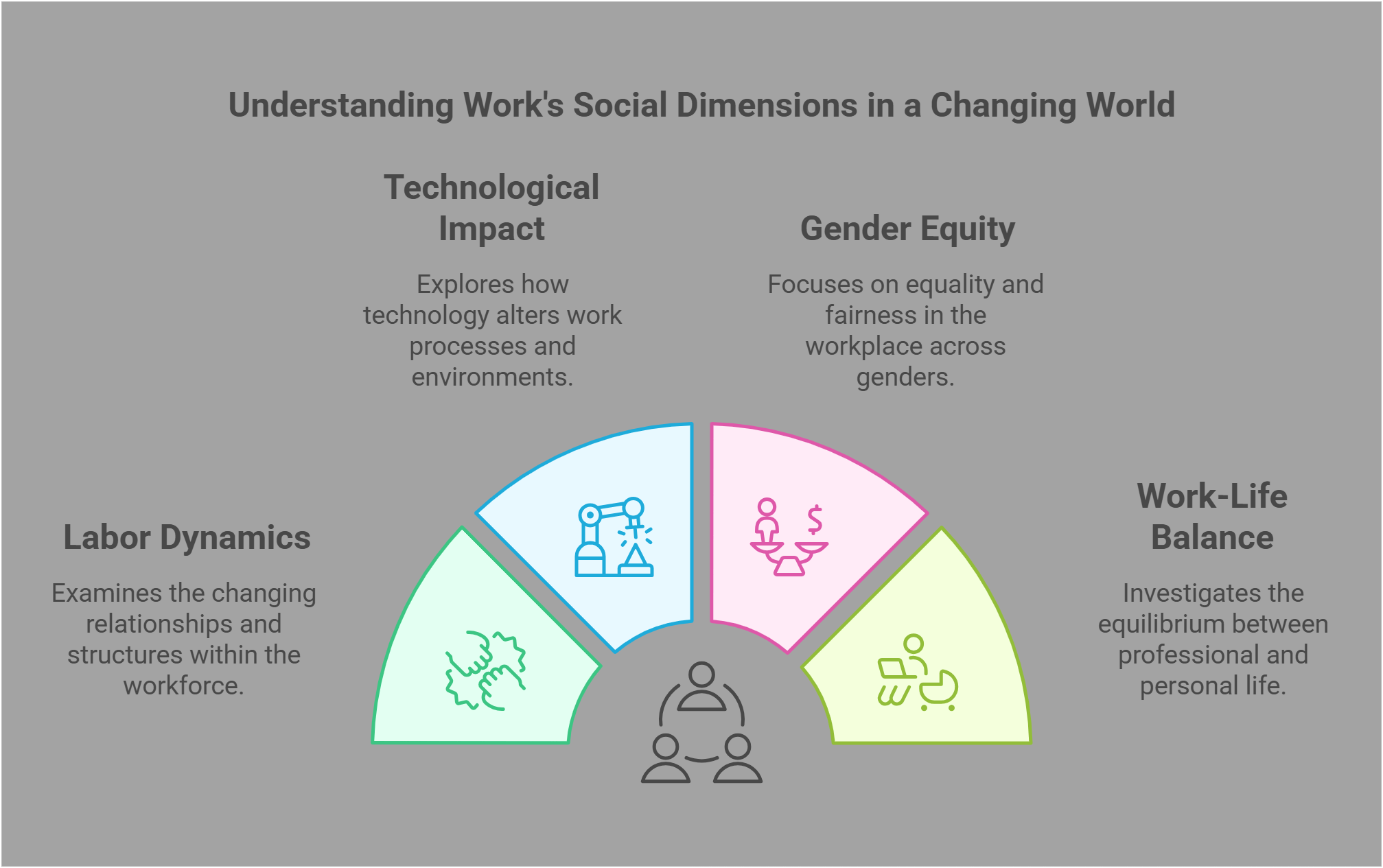
🔑 Key Concepts
This guide explores the following essential concepts in the sociology of work:
- Division of Labor
- Taylorism vs. Fordism
- Work-Life Balance
- Informal Economy
- Gender and Work
- Gig Economy
- Unionization
- Alienation
- Productivity vs. Job Satisfaction
- Automation
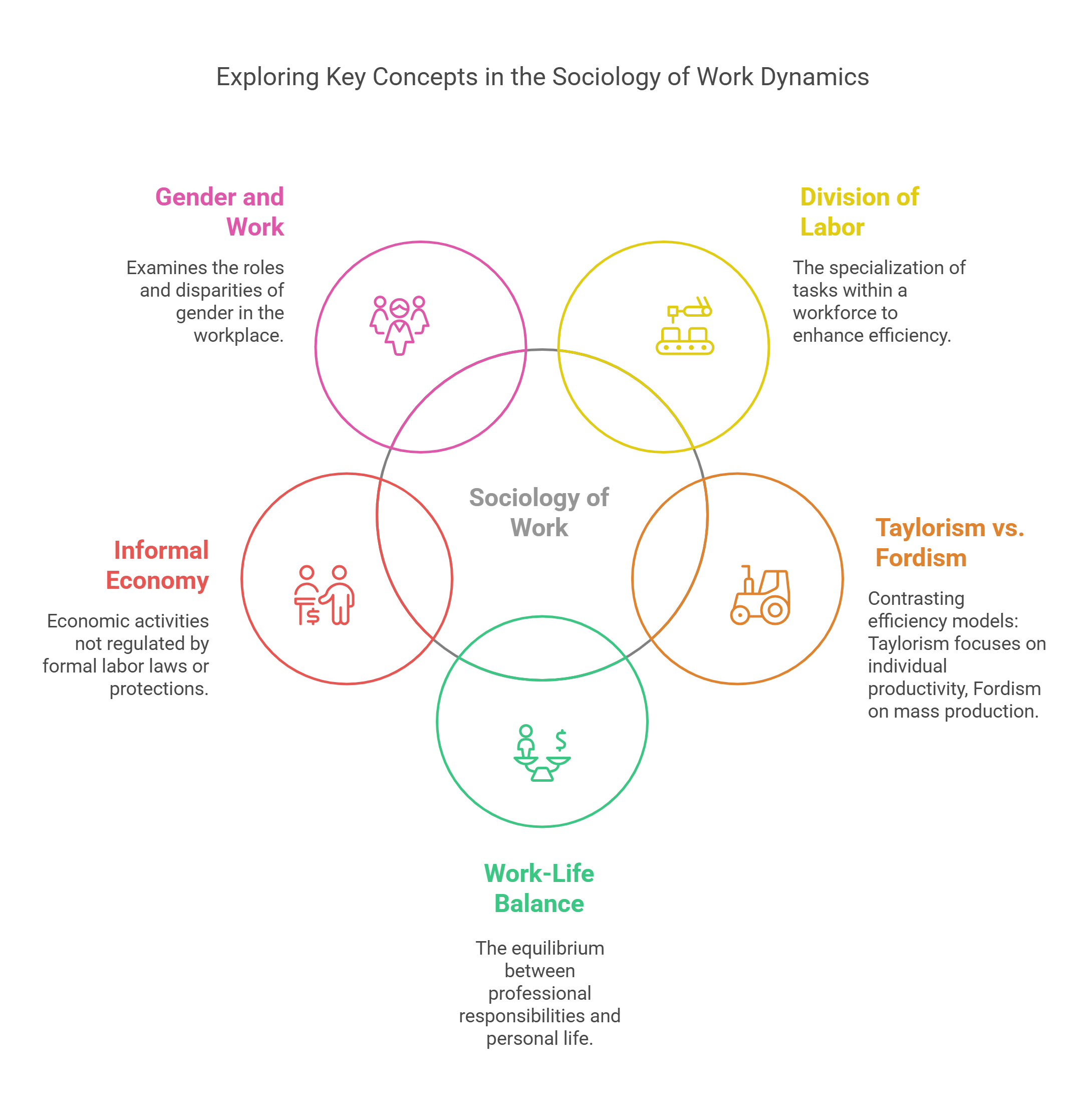
1. Division of Labor
The division of labor refers to the specialization of tasks within a workforce, enhancing efficiency and productivity. Coined by Émile Durkheim, this concept highlights the social and economic implications of work segmentation.
- Types of Division:
- Simple Division: Tasks split by individual abilities or gender.
- Complex Division: Highly specialized tasks requiring expertise (e.g., modern industries).
- Durkheim’s Perspective:
- Mechanical Solidarity: Social cohesion in traditional societies with minimal labor division.
- Organic Solidarity: Interdependence in modern societies with complex labor roles.
📘 Example: Assembly lines in factories represent the complex division of labor.
Explained Simply: Division of labor is like teamwork, where everyone’s specific role contributes to a common goal.
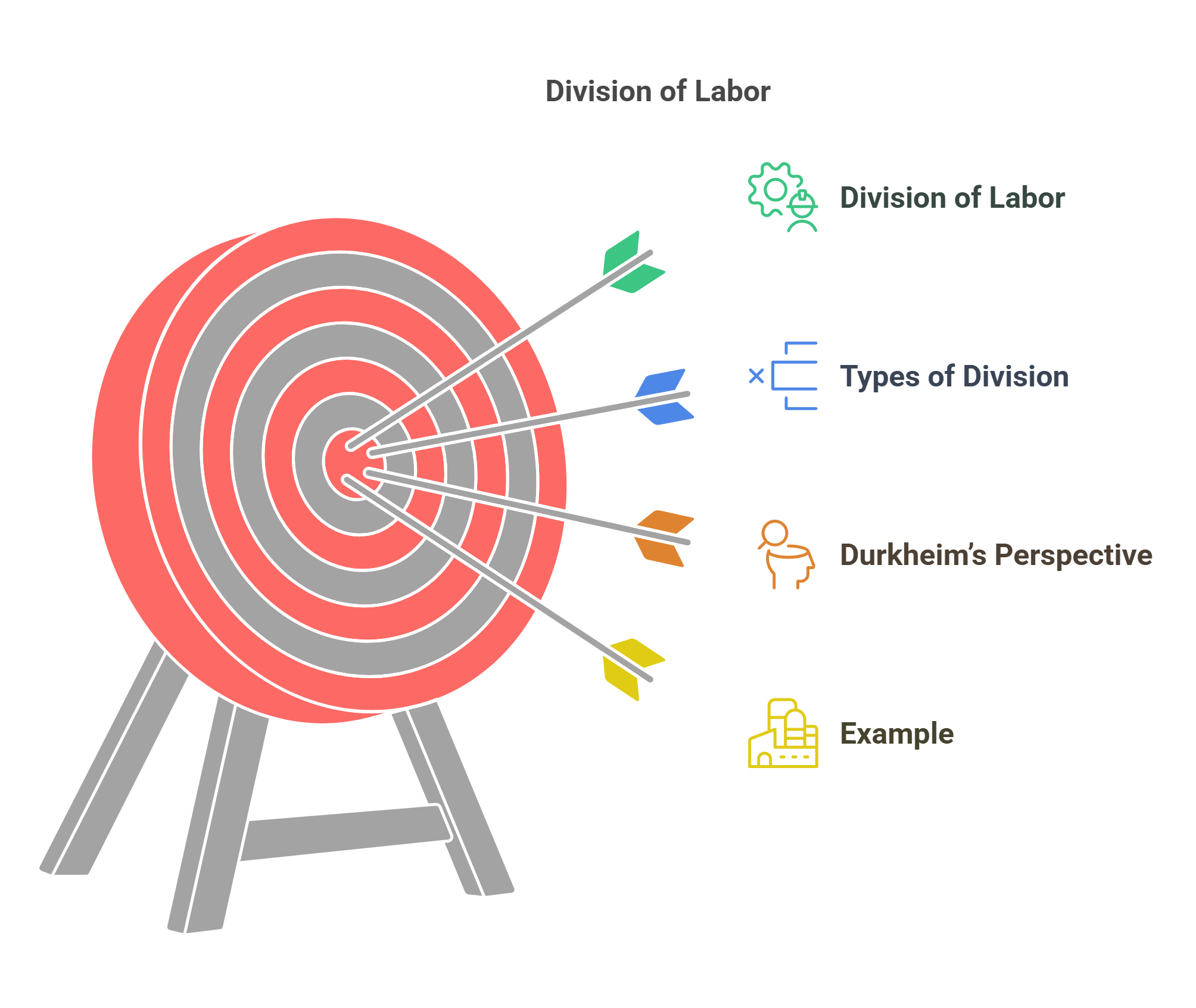
2. Taylorism vs. Fordism
Both Taylorism and Fordism revolutionized work organization but differ in their focus and applications:
- Taylorism (Scientific Management):
- Emphasized time efficiency and task optimization.
- Proposed by Frederick Taylor to enhance productivity through detailed work analysis.
- Criticism: Dehumanized workers by reducing creativity.
- Fordism:
- Introduced by Henry Ford, it combined mass production with higher wages.
- Dependent on assembly line techniques for producing standardized goods.
- Criticism: Limited flexibility in production and workforce skills.
📘 Example: Taylorism influenced time-motion studies, while Fordism revolutionized automobile production.
Explained Simply: Taylorism is like tuning a machine for precision, while Fordism scales production for speed.
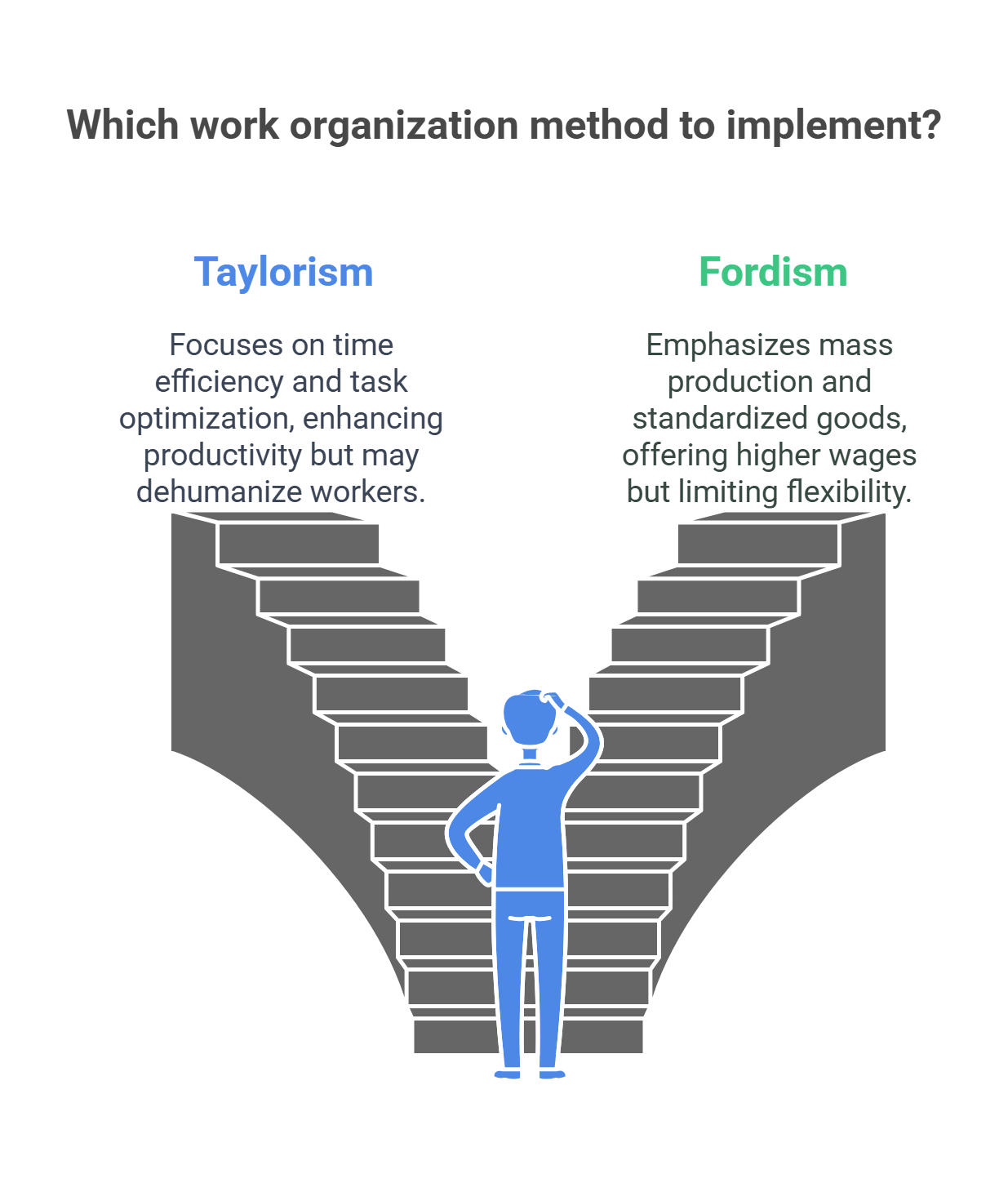
3. Work-Life Balance
Work-life balance refers to the equilibrium between professional responsibilities and personal well-being. It has gained prominence with the rise of burnout and mental health awareness.
- Key Factors:
- Flexible work arrangements, such as remote work or flextime.
- Organizational policies supporting parental leave and wellness programs.
- Challenges:
- Increasing demands in a competitive job market.
- Technology blurring boundaries between work and personal life.
📘 Example: Companies like Google promote work-life balance through onsite wellness facilities and vacation policies.
Explained Simply: Work-life balance is like juggling, ensuring neither work nor personal life drops.
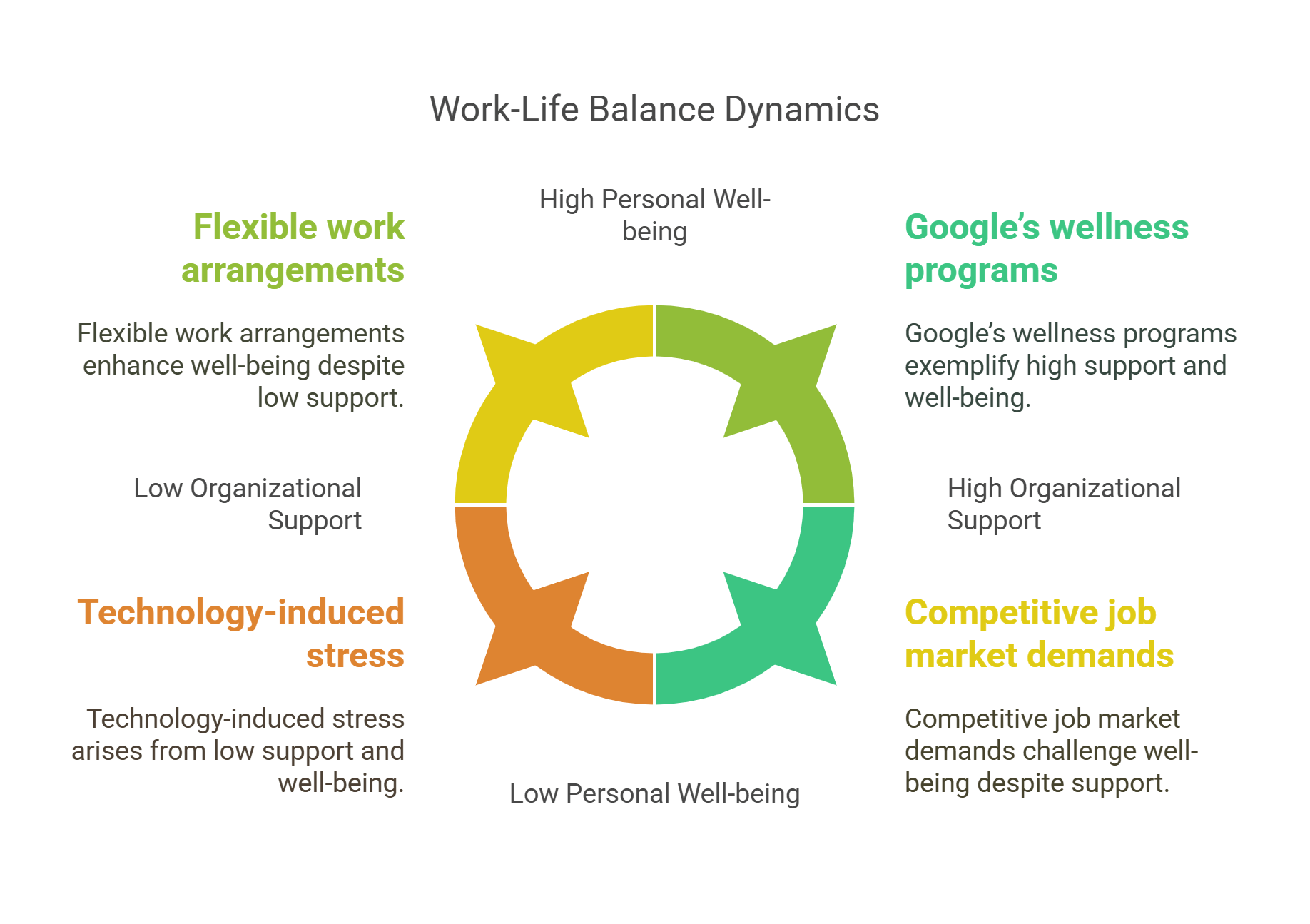
4. Informal Economy
The informal economy includes unregulated and untaxed economic activities outside formal employment structures. It often provides essential income in developing nations but lacks legal protections.
- Key Features:
- Precarious working conditions and lack of benefits.
- Includes street vending, domestic work, and freelance services.
- Impact:
- Supports livelihoods in low-income areas.
- Contributes to economic inequality and labor exploitation.
📘 Example: Street food vendors in urban areas operate within the informal economy.
Explained Simply: The informal economy is like a shadow system—important but unregulated.
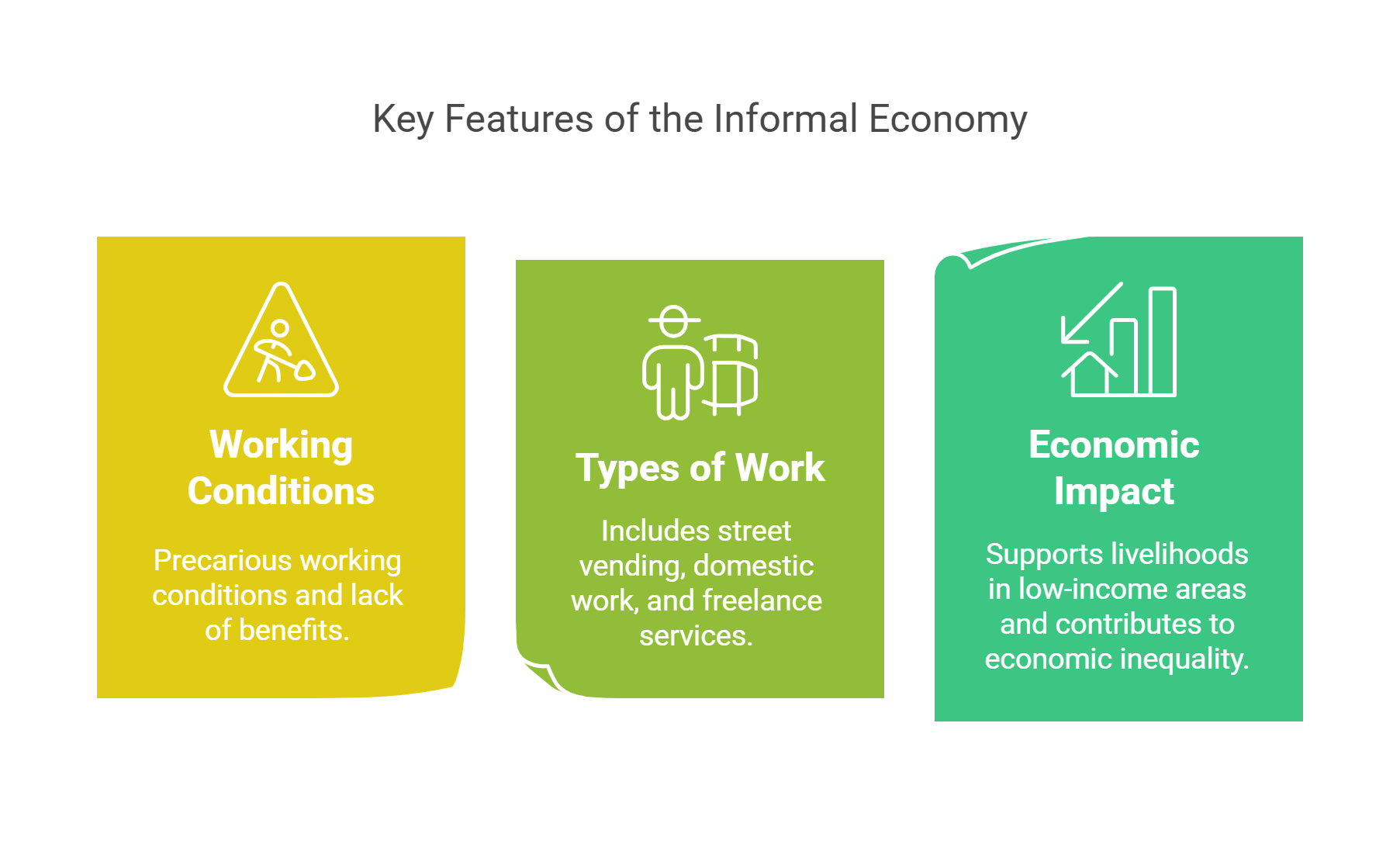
5. Gender and Work
This concept examines how gender shapes roles, opportunities, and experiences in the workplace, often highlighting inequalities in pay, leadership, and labor division.
- Key Issues:
- Gender Pay Gap: Women earning less than men for similar roles.
- Glass Ceiling: Barriers preventing women from reaching leadership positions.
- Gendered Labor Division: Women overrepresented in care-related jobs.
- Progress:
- Policies promoting workplace diversity and equal pay.
📘 Example: Women make up a significant portion of the healthcare workforce but are underrepresented in executive roles.
Explained Simply: Gender and work reveal the invisible biases shaping opportunities and expectations.
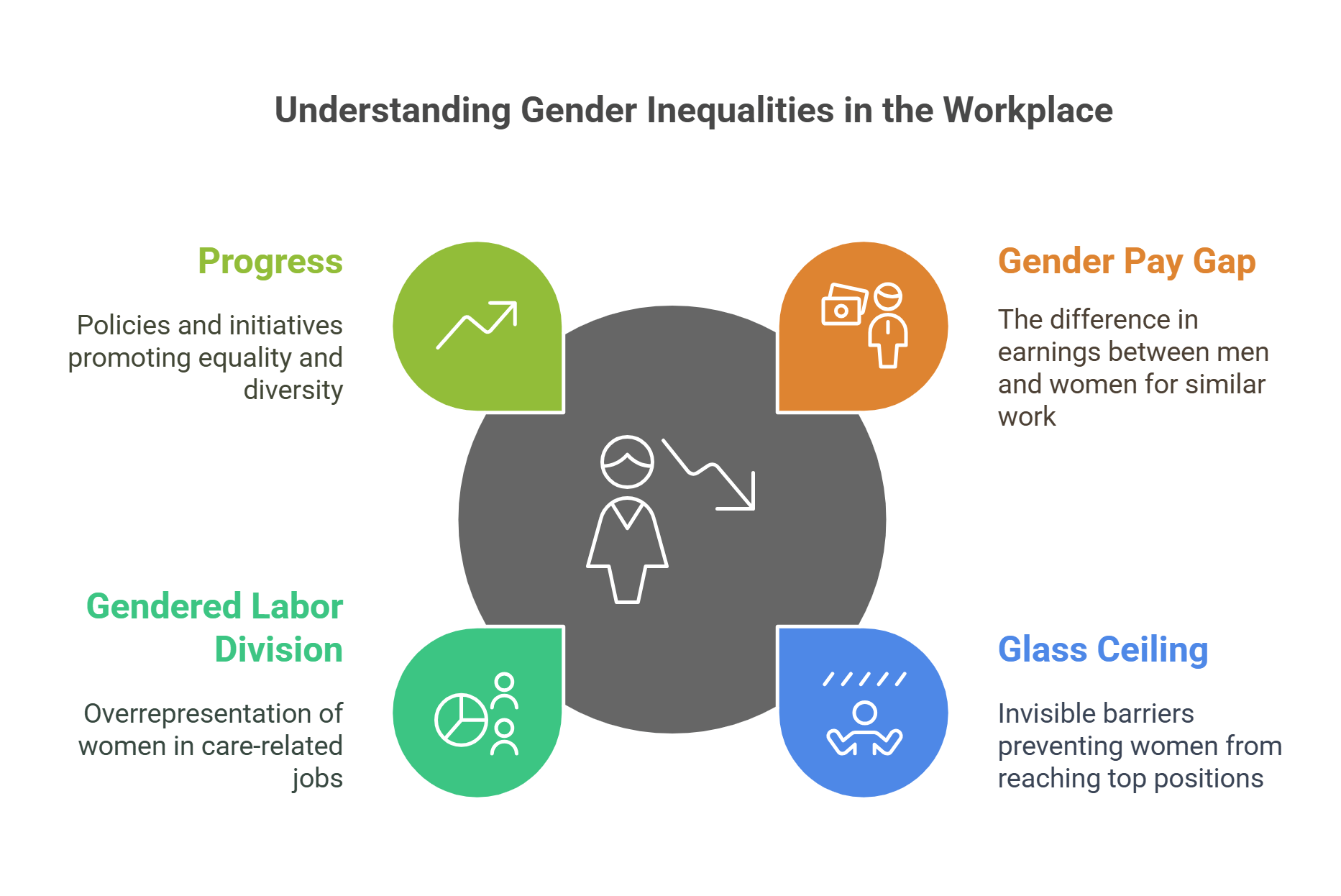
6. Gig Economy
The gig economy refers to a labor market characterized by short-term contracts, freelance work, and platform-based jobs. While offering flexibility, it raises concerns about job security and benefits.
- Key Features:
- Jobs mediated by apps or platforms (e.g., Uber, Fiverr).
- Workers paid per task or project rather than salaried.
- Pros and Cons:
- Pros: Flexibility, autonomy, and diverse opportunities.
- Cons: Lack of stability, benefits, and labor rights.
📘 Example: A freelance graphic designer securing projects on platforms like Upwork.
Explained Simply: The gig economy is like assembling a puzzle with shifting pieces—adaptable but uncertain.
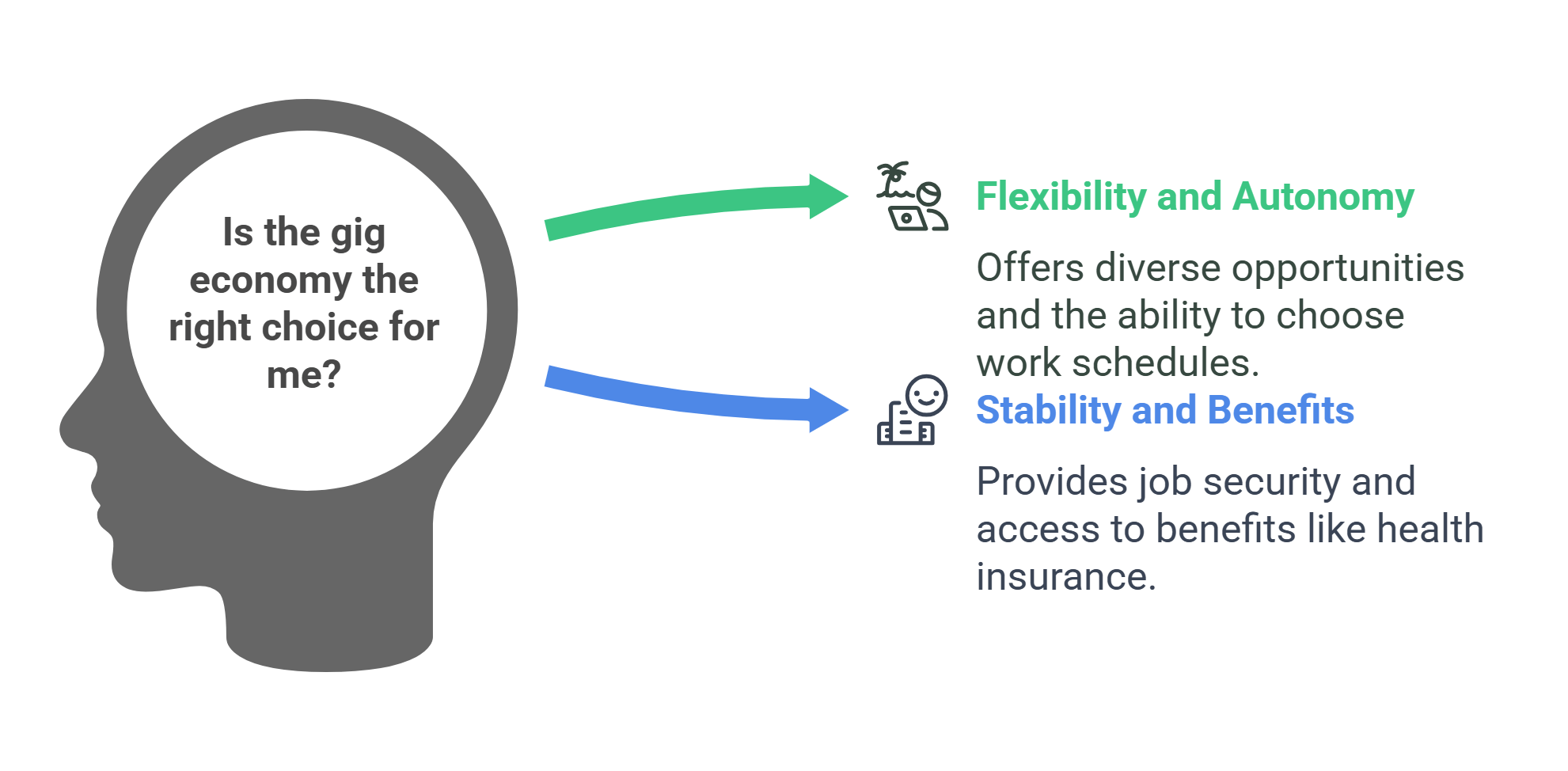
7. Unionization
Unionization involves workers organizing to collectively bargain for better wages, benefits, and working conditions. Trade unions play a crucial role in advocating for labor rights.
- Key Functions:
- Negotiating collective agreements.
- Protecting workers from unfair dismissal.
- Challenges:
- Declining union membership in some regions.
- Opposition from employers citing cost concerns.
📘 Example: The United Auto Workers (UAW) union negotiating contracts in the U.S. automobile industry.
Explained Simply: Unionization is like forming a team to ensure fairness and support for everyone.
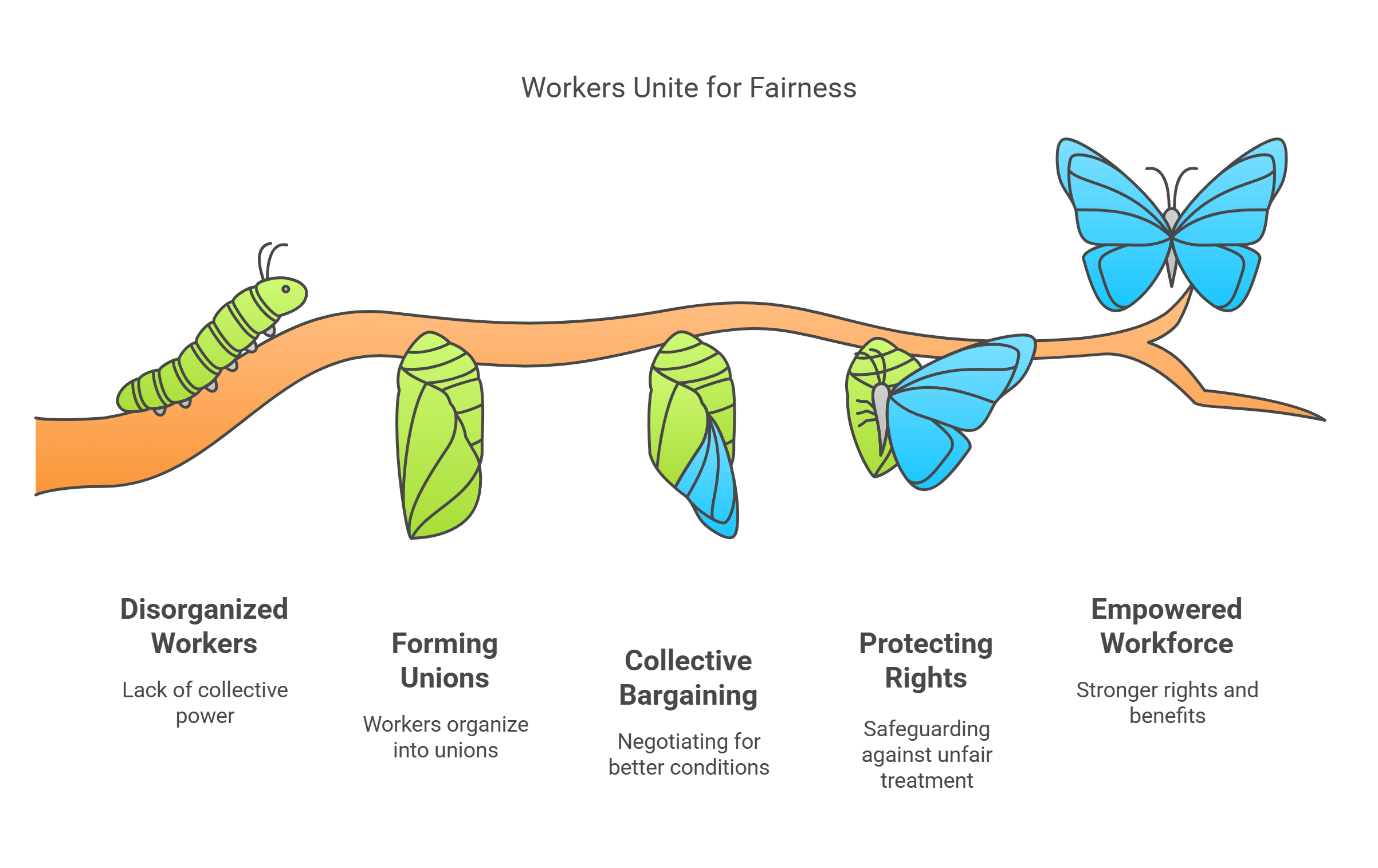
8. Alienation
Alienation, a concept introduced by Karl Marx, describes the disconnect workers feel when they lose control over their labor and its outcomes. It arises in capitalist systems where profit takes precedence over personal fulfillment.
- Key Aspects:
- Alienation from the Product: Workers have no ownership of what they produce.
- Alienation from the Process: Tasks are repetitive and lack creativity.
- Alienation from Others: Competitive workplaces reduce camaraderie.
- Alienation from Self: Work becomes meaningless, eroding self-identity.
📘 Example: Factory workers assembling parts without understanding the final product may feel alienated.
Explained Simply: Alienation is like being a cog in a machine, detached from purpose or connection.
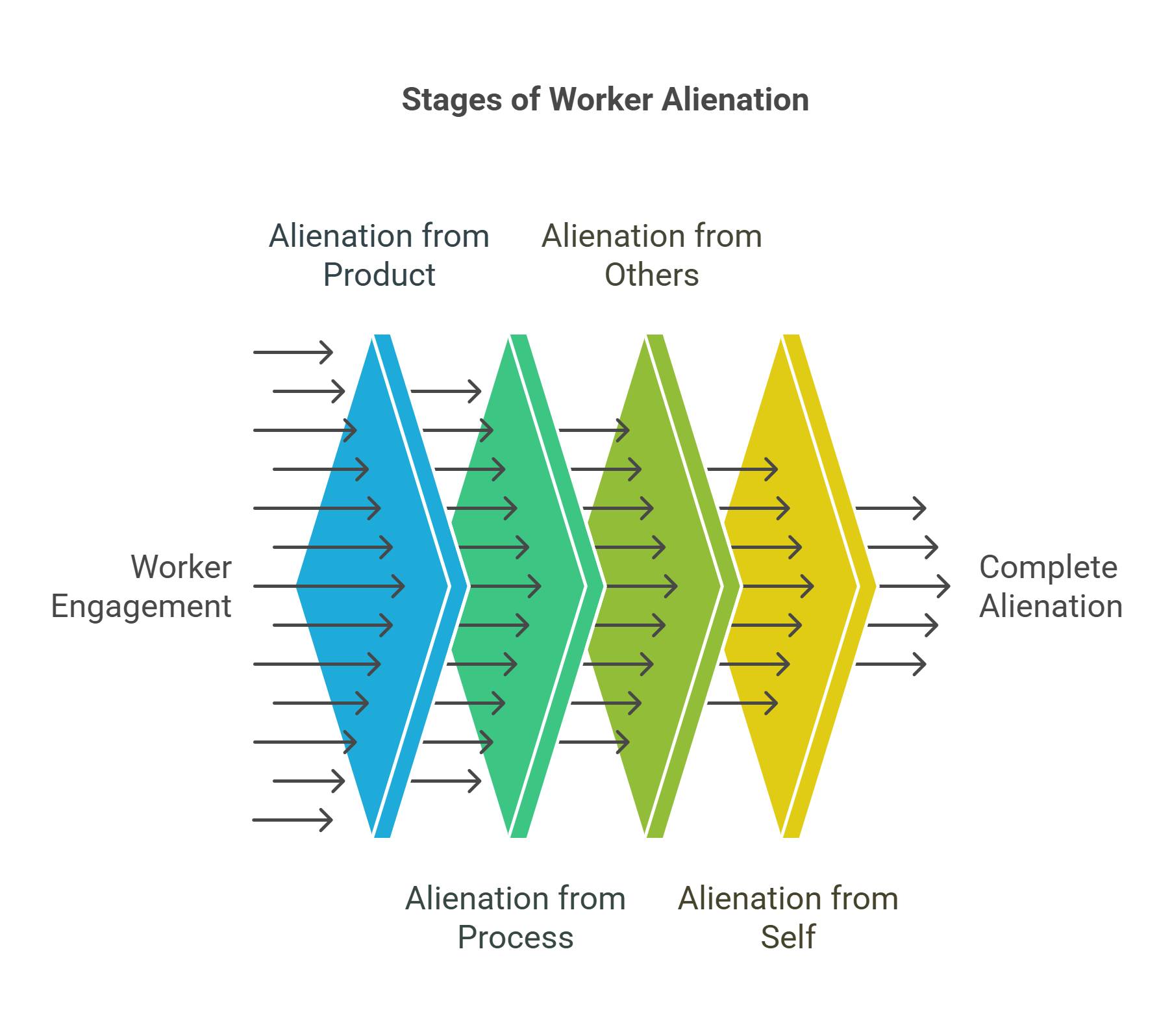
9. Productivity vs. Job Satisfaction
This concept explores the relationship between workplace efficiency and employee happiness, often highlighting the tension between achieving high productivity and maintaining job satisfaction.
- Key Factors Influencing Balance:
- Work environment and recognition.
- Opportunities for growth and autonomy.
- Applications:
- Policies promoting employee well-being often improve both satisfaction and productivity.
📘 Example: Companies that offer flexible hours often see higher job satisfaction without sacrificing output.
Explained Simply: Productivity and job satisfaction are like fuel and oil—both are essential for a smooth-running workplace.
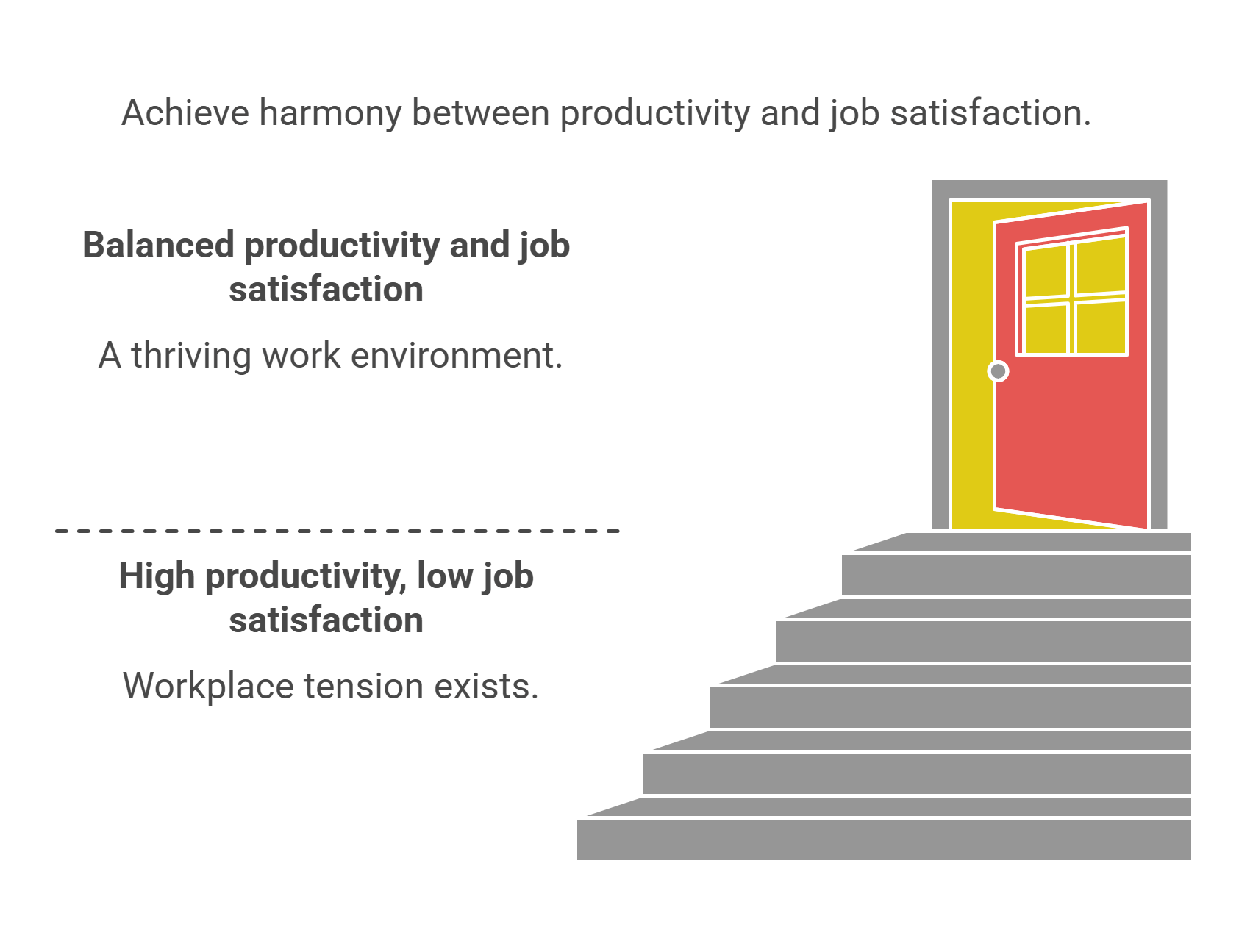
10. Automation
Automation involves using technology to perform tasks traditionally carried out by humans. While increasing efficiency, it also raises concerns about job displacement.
- Key Trends:
- Industrial robots in manufacturing.
- AI-driven tools in customer service and data analysis.
- Impact:
- Improves productivity and reduces costs.
- Creates challenges in reskilling workers for new roles.
📘 Example: Self-checkout machines in supermarkets replacing cashier roles.
Explained Simply: Automation is like upgrading to autopilot—efficient but reducing human involvement.
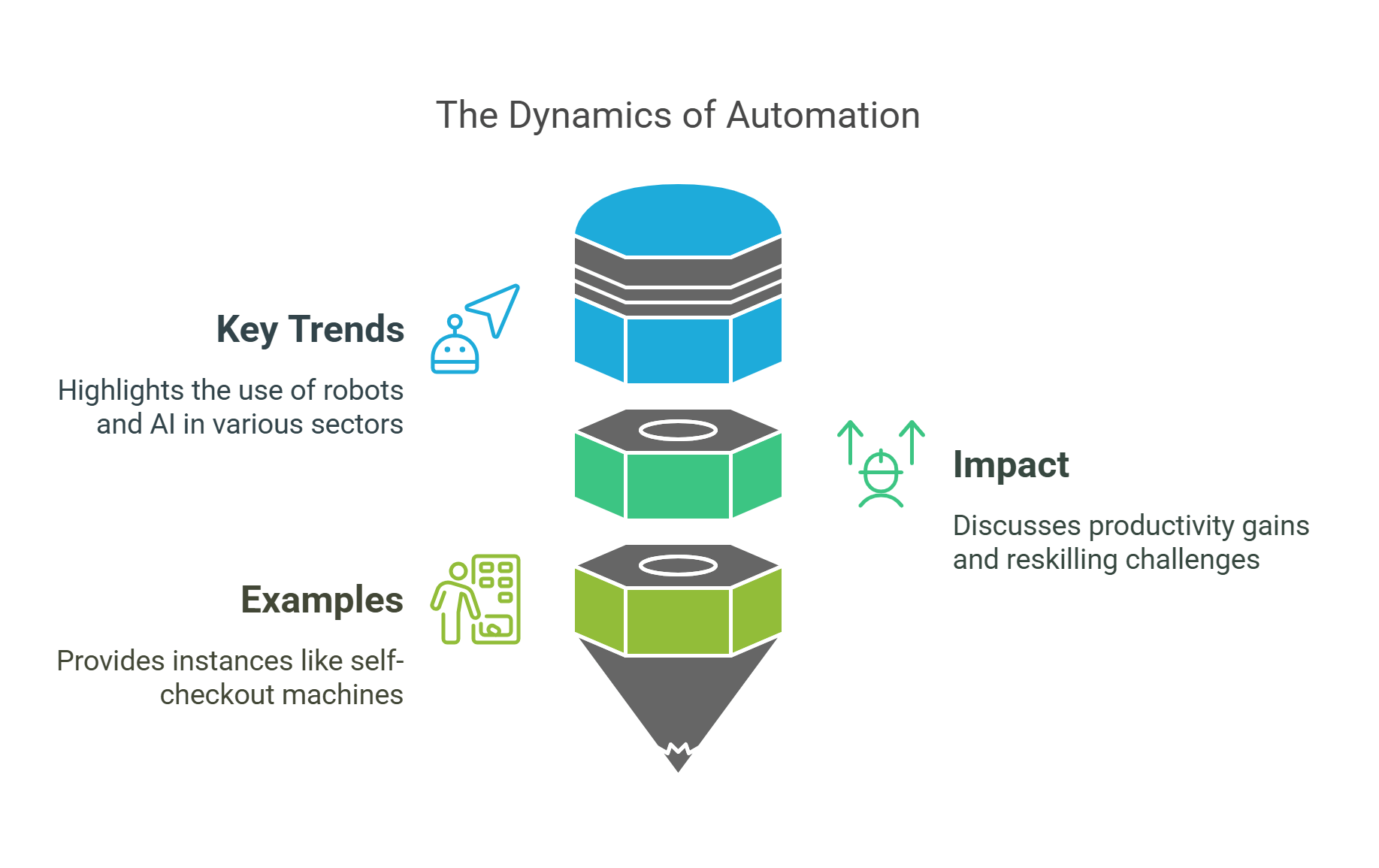
✨ Conclusion
The sociology of work highlights the evolving dynamics of labor, power, and human relationships in the workplace. By understanding concepts like the division of labor, alienation, and the gig economy, readers can critically analyze RC passages and broader societal trends. This field provides essential insights into the challenges and opportunities shaping the modern workforce and its future.










